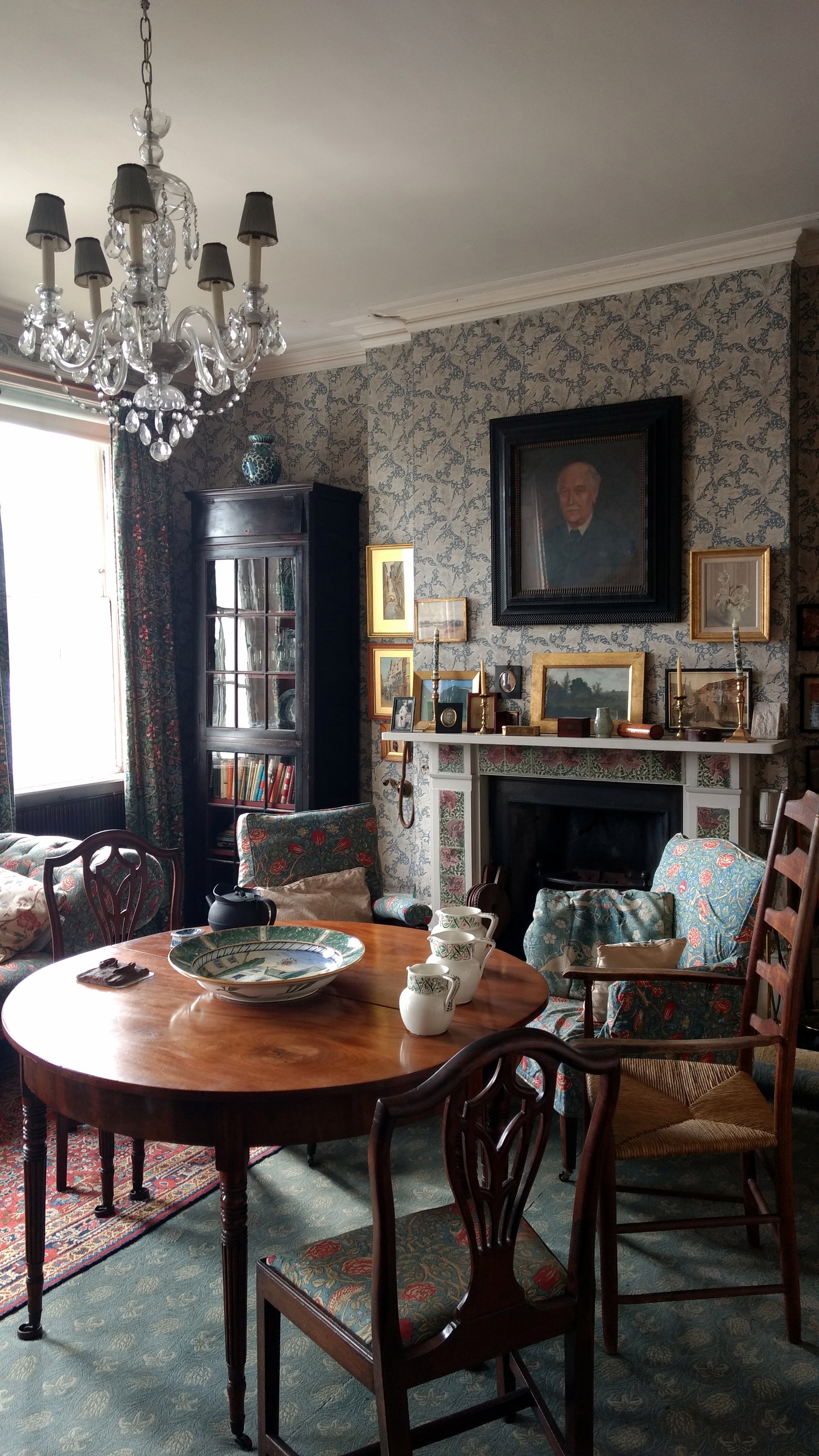
Conservation cleaning in the small and intimate surroundings of Emery Walker’s House at 7 Hammersmith Terrace soon becomes quite personal. At the end of a long, careful and therefore tiring day there is the temptation to look up at the severe, but kindly Victorian demeanour of Emery Walker above the fire place and ask, ‘ Well, what do you think? Have I missed anything?’
This is certainly no vast pile calling for armies of conservationists at considerable cost. Indeed, cramped for space and requiring careful repositioning of artefacts and furniture so as to provide room for cleaning, it soon becomes obvious that for most tasks one is ‘company’, two or more would become a counter-productive crowd.
It is a small 18th century terraced house, positioned on the north bank of the Thames with Hammersmith Bridge downstream and the Chiswick Eyot upstream. The house and its surrounds, along with the rest of the Terrace, have been battered over the centuries by a relentless tidal river and prevailing easterly and westerly winds.
Recently, there has been some great conservation work on, inter alia, the roof and some of the original hand-printed William Morris wallpaper. But it remains a fragile environment. The wonderful contents of the house need constant care and attention, but this too has to be sensitively managed. Our obsession with dust-free environments has to be curtailed in such a house. Over cleaning can often be as damaging as none at all. Dust can be an abrasive on fragile surfaces.

Following the inevitable upheaval of the recent ‘restoration’, some nine months later much time was spent planning the conservation work and creating new covers using conservation-grade tissue paper and calico. Not everything that needs covering has been covered. Loose draping was used to compensate in the short term. A plan is in place to have everything ready for the next winter conservation cleaning shut down. Fortunately, there is a lot of available empty cupboard and drawer space where all moveable artefacts from the tops of pelmets and furniture can be stored once cleaned.
At the moment, we only have the wonderful embroidered work on the bed permanently covered, essential given how damaging light can be. However, at least another two items need permanent covering in much the same way.
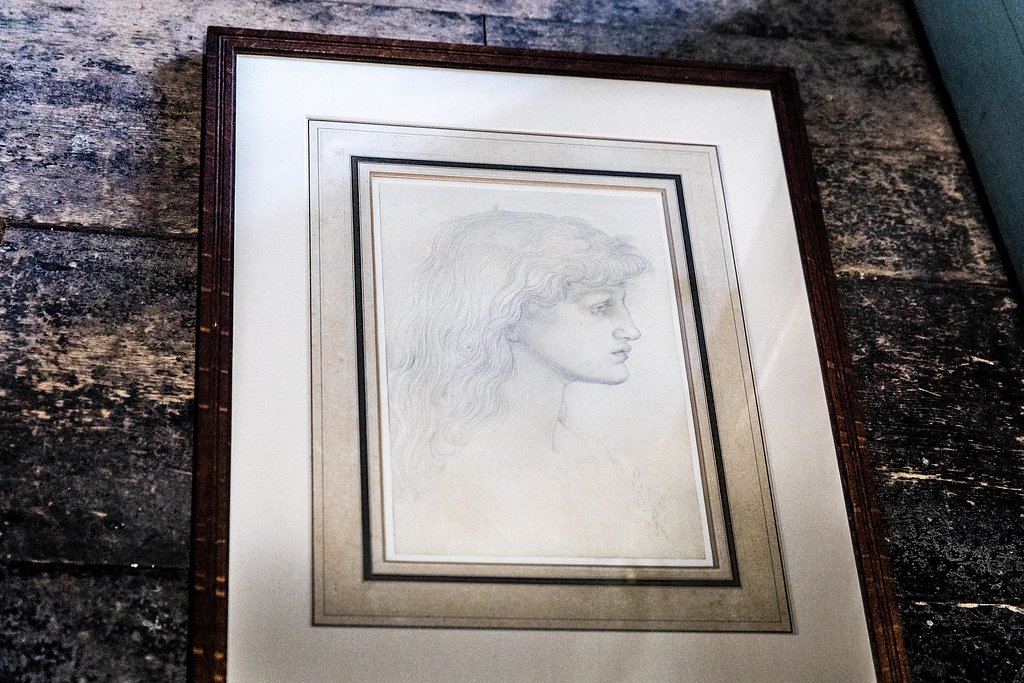
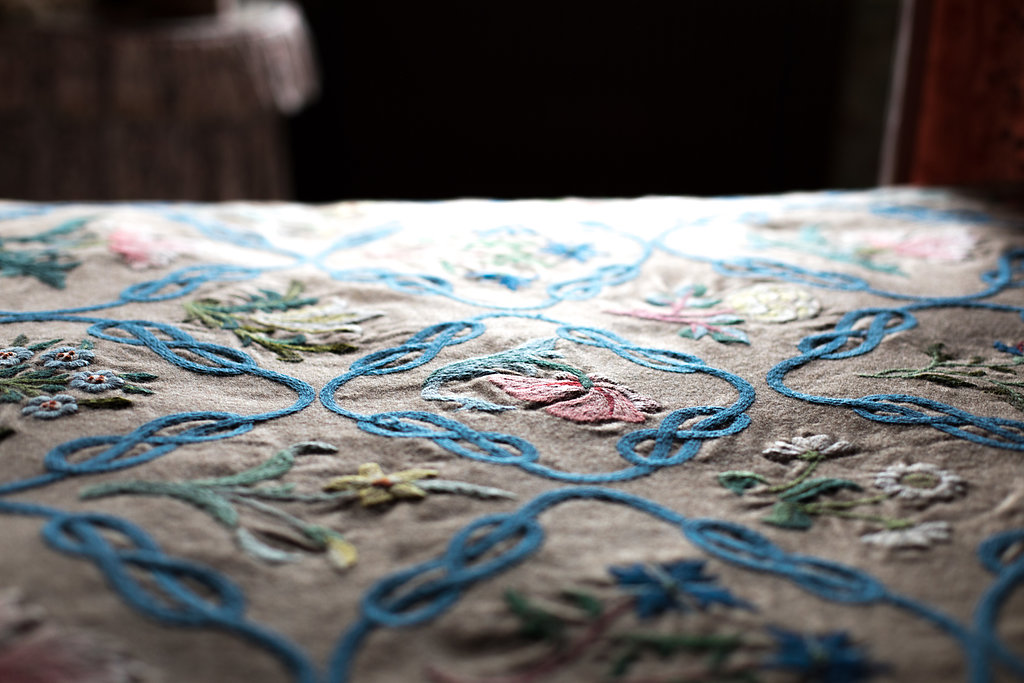
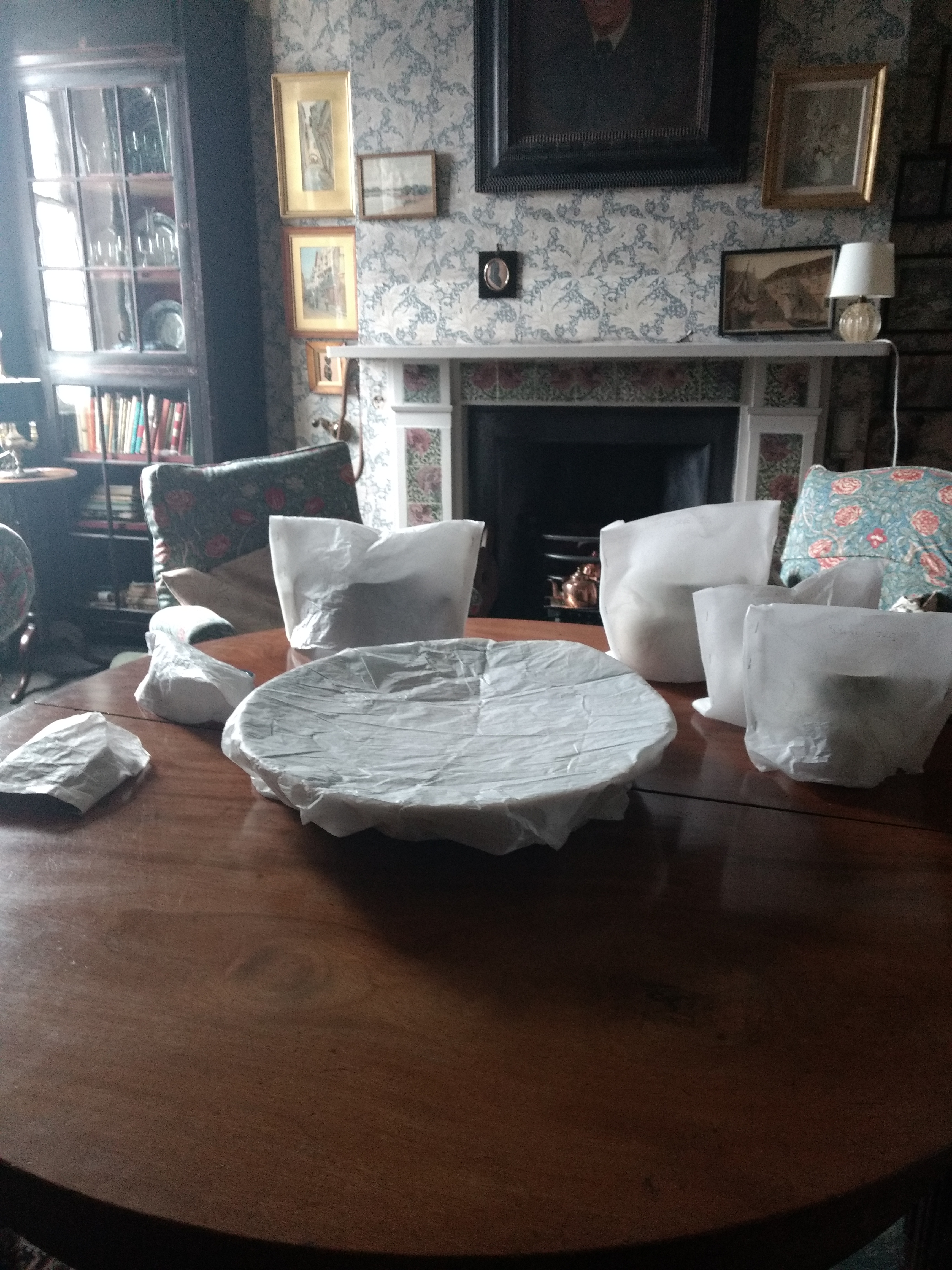

The exquisite portrait of May Morris by Sir Edward Burne-Jones hangs on a wall behind the door in the drawing room but, critically, facing the windows. It is fading. A temporary cover has been put over it. A proper one is being prepared. It needs to remain there permanently.
The 17th century library chair in the dining room took some time to clean. Sadly, it really was filthy. Delicate soft brushwork was required. It’s not just a valuable piece of furniture. It symbolises the close friendship between Emery Walker and William Morris. The chair once stood in Morris’s library and was given to Walker by Morris’s wife Jane after his death in 1896.
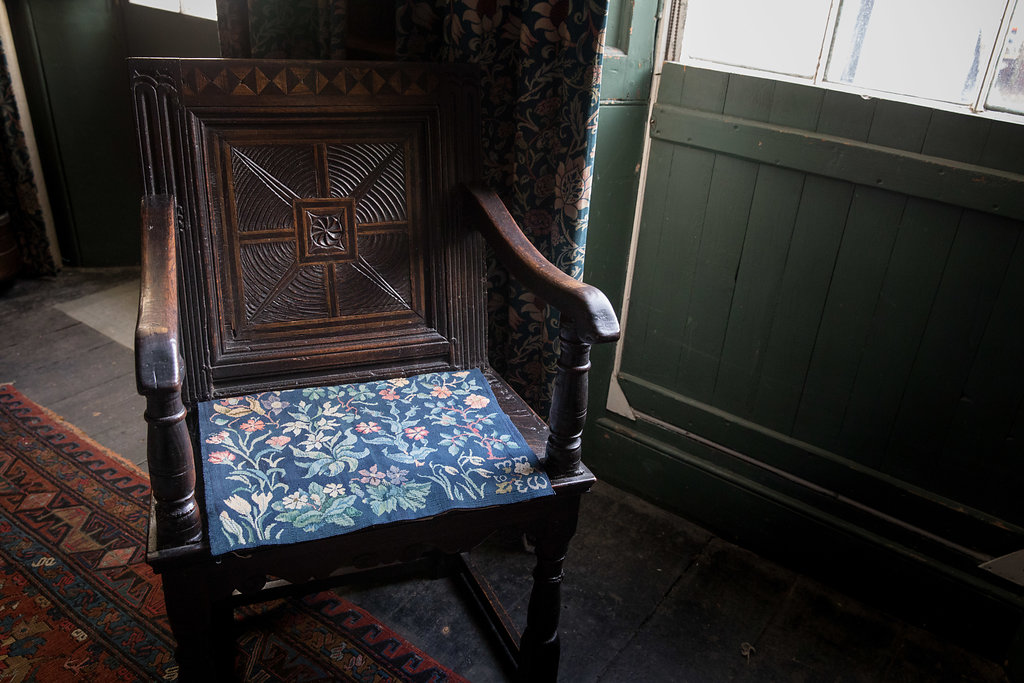
The positioning – alongside the main thoroughfare of the house, very close to the almost permanently open conservatory door and, during the open season, the open door to the garden – is not ideal for such a valuable piece. London air is filthy. As a keen cyclist I’m acutely aware of the pollution. The library chair has now been moved further into the room and a cover prepared. The cover will be a permanent fixture except on public visiting days.
Conservation is as much about prevention as it is about cleaning and restoration. Preventing, as far as possible, an accumulation of damaging dirt on fragile artefacts, furniture, ceramics and textiles is essential for the long-term preservation of the contents. It is also cost-effective. An important factor for a small charitable trust.
Half way through the first morning, I half expected daughter Dorothy or companion Elizabeth de Haas to pop in and ask if I would like a cup of tea. That really would have made my day.





